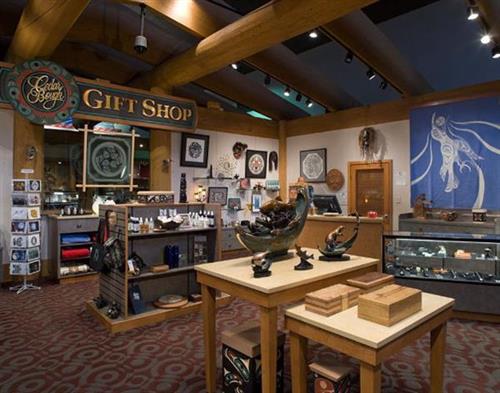


They were craftspeople skilled in woodcarving and basket making, and they fashioned ceremonial masks, serving dishes and utensils, and storage boxes from cedar, and woven mats, rope, and clothing from cedar bark. The inhabitants hunted game and subsisted on the wealth of shellfish, herring, and salmon. They moved from village to village in their traditional territory during the spring, summer and fall, for fishing and resource gathering, and settled into more permanent longhouses for the winter months. Inhabiting this area for more than 10,000 years, the S’Klallams possessed a rich social and religious culture based on the abundant natural resources of the Northwest Coast. The location is remote and scenic, with more than 200 miles of rugged coastline, which has long been the place of many S’Klallam villages. Our vision is to preserve and enhance the Jamestown S’Klallam Nation’s historical and cultural identity as a strong, proud and self-reliant community while protecting and sustaining our tribal sovereignty, self-governing authority, homelands and treaty rights.īounded by the Pacific Ocean to the west, the Strait of Juan de Fuca to the north, and by Hood Canal to the east, Washington State’s Olympic Peninsula has always been a rural area whose residents have been dependent on local resources. This provided a geographical center for group identity and independence, and was the start of the Jamestown S’Klallam community. In 1874, under the leadership of Tribal citizen Lord James Balch, they pooled $500 in gold coins and purchased the 210-acres along the Strait of Juan de Fuca, now called Jamestown. As increasing numbers of non-Indian settlers began to arrive in the area desiring the same abundant lands and waters that were so important to the S’Klallam people, the S’Klallam people living in the Dungeness area decided that in order to survive, they had to adopt a new value system that included property ownership. In 1855, the S’Klallam leaders signed a treaty with the Federal government with the understanding that they would always be able to hunt, fish and gather in their “usual and accustomed” grounds.

Our history shows that we have always been self-reliant and determined to forge our own path. “S’Klallam” is a Salish term for “The Strong People.”


 0 kommentar(er)
0 kommentar(er)
